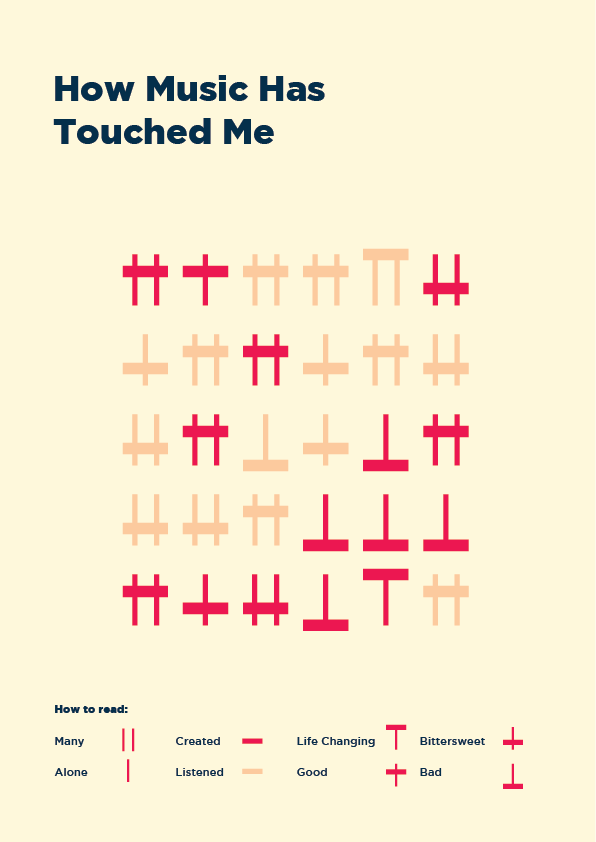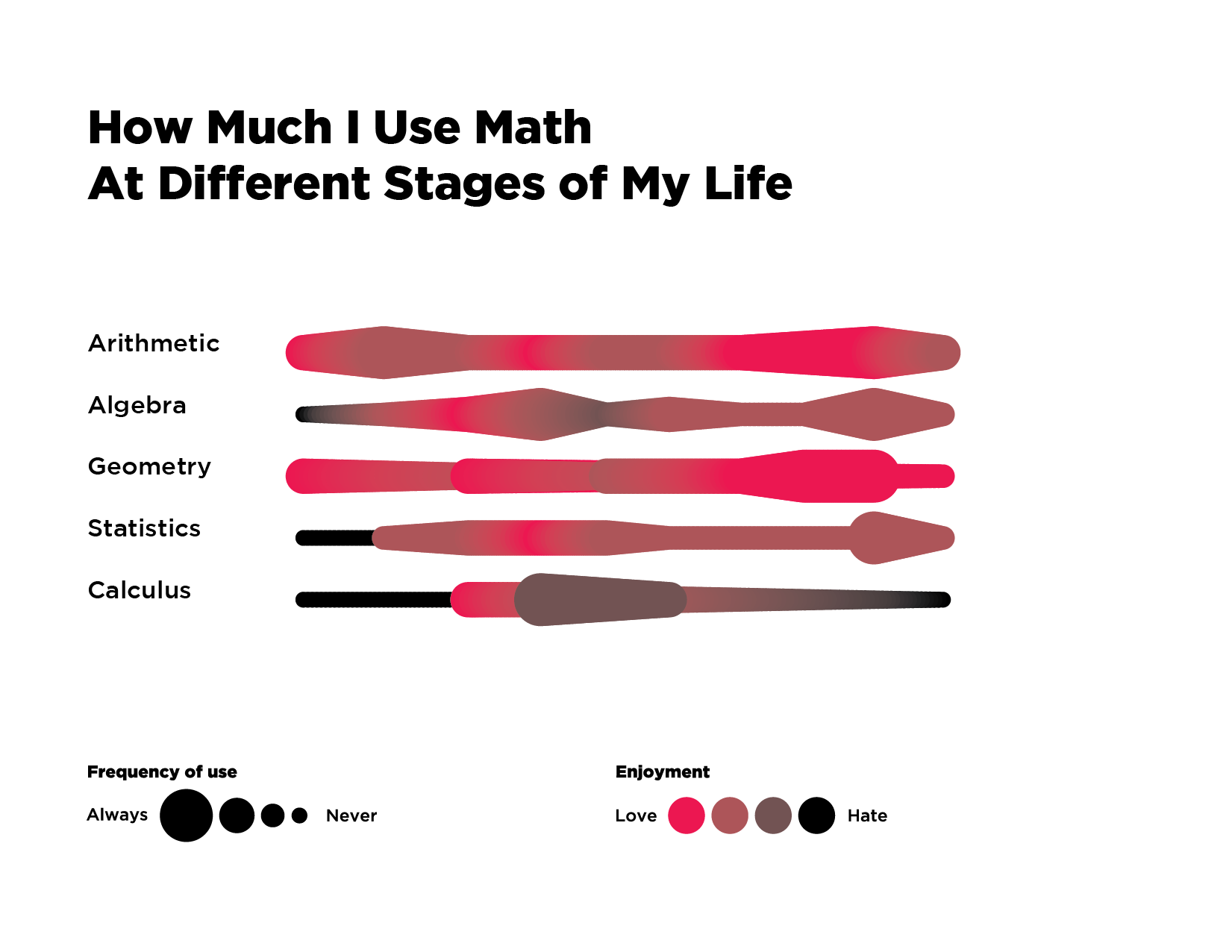major-studio-1
Me, My Data
Brainstorming
For this project I wanted to pursue a different, more introspective take on the topics of music, math and touch. While observing people enjoying music or math, I noticed that the enjoyment process can be very personal and may not show as facial/bodily expressions, nor as spoken words.
Where does the joy lie, and where can I find it? I decided to dive deeper, taking a cue from Giorgia Lupi’s Creative Mornings talk at the Tishman Auditorium, where she mentioned that the soul-searching and deeply vulnerable experience of collecting our own data can reveal interesting insights.
I am also constantly reminded of Lance Weiler’s advice at his recent Story I/O workshop, where he learnt that an unforgettable resonating experience is often one where the participant invests a part of herself in the story, where without her part, the story falls apart. Which parts did I invest, in all these recollections of data?
Data Poster

How Music Has Touched Me
I’ve kept it brief to about 30 experiences, which you can find in a Google Sheet here. It is amazing how mamy memories get dredged up, and the strong emotions that still accompany them.
I’ve struggled to find a good vehicle for these data. It would be cliched to use a timeline; furthermore, the emphasis isn’t on how the memories are connected by time. Instead, the interesting insights are the intensity of emotions, whether good or bad, and how I experienced music alone or with family and friends.
I’ve ultimately decided to use the concept of sliders, such as those on audio mixing consoles(though abstracted), as they indicate levels visually. I also wanted to see how often I was an audience, and how often I played a part in creating.
Data Postcard

How Much I Use Math (At Various Stages of My Life)
This one was less obvious, and actually very difficult to define. As a math teacher, it is very easy to locate explicit math practices (algebraic manipulation, differentiation, graph plotting, etc), but I think that’s not very interesting in the context of designing for my final project. Simply put: these practices very rarely bring joy, and even if they do, they have very rigid definitions for success.
To put together some kind of thinking/feeling/remembering spreadsheet, I decided to collate not only math practices, but also the mathematical principles and processes involved. This made it more relevant to things like Graphic Design (I use the “reflect” tool in Illustrator a lot) and Military (dealing with rules and ambiguity at the same time, like algebra). Like many people, I have also had a love-hate relationship with math, having loved certain parts (mostly when I’m on a solving streak) in academia, but also hating it for its rigor, and how much prior knowledge needs to go into getting a question correct.
Reflections from both, and Next Steps
From music, I am reminded that opportunities to create are potentially important ones, as are ones that we share with loved ones. They can be the ones that memories are made of.
From math, I am reminded that math practices, devoid of purpose and executed for its own sake, though can be fun as puzzles for the curious and able, but ultimately difficult to extend consciously to the practicalities and complexities of everyday life. Perhaps surfacing these mathemagical moments and tying them to the everyday life is worth exploring.